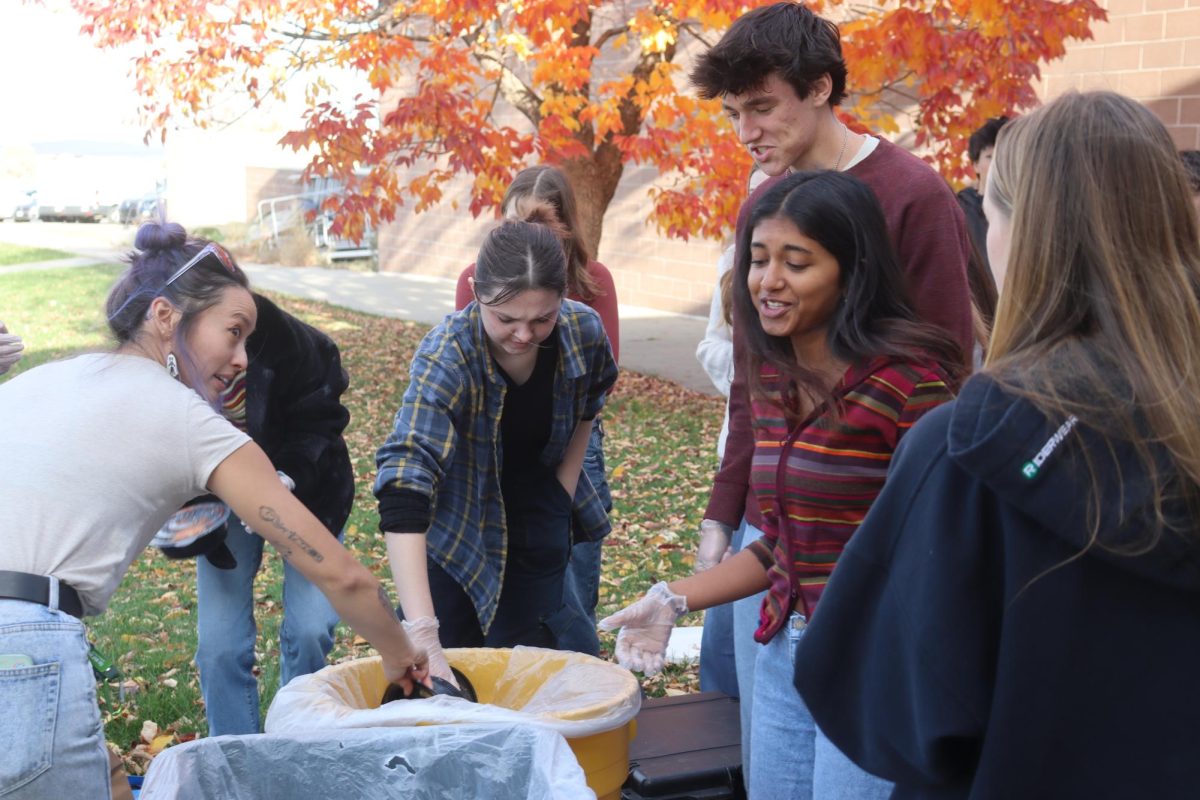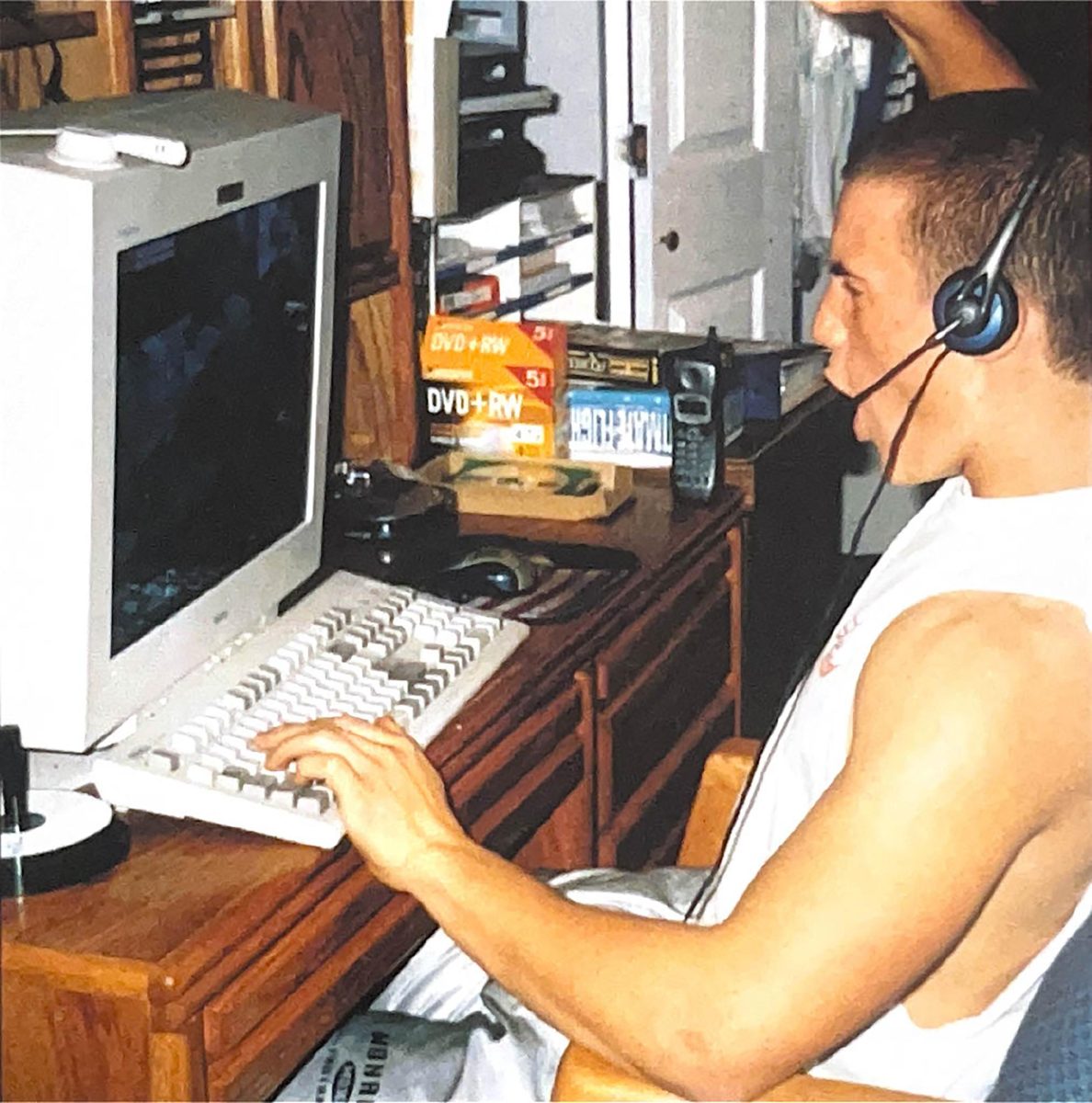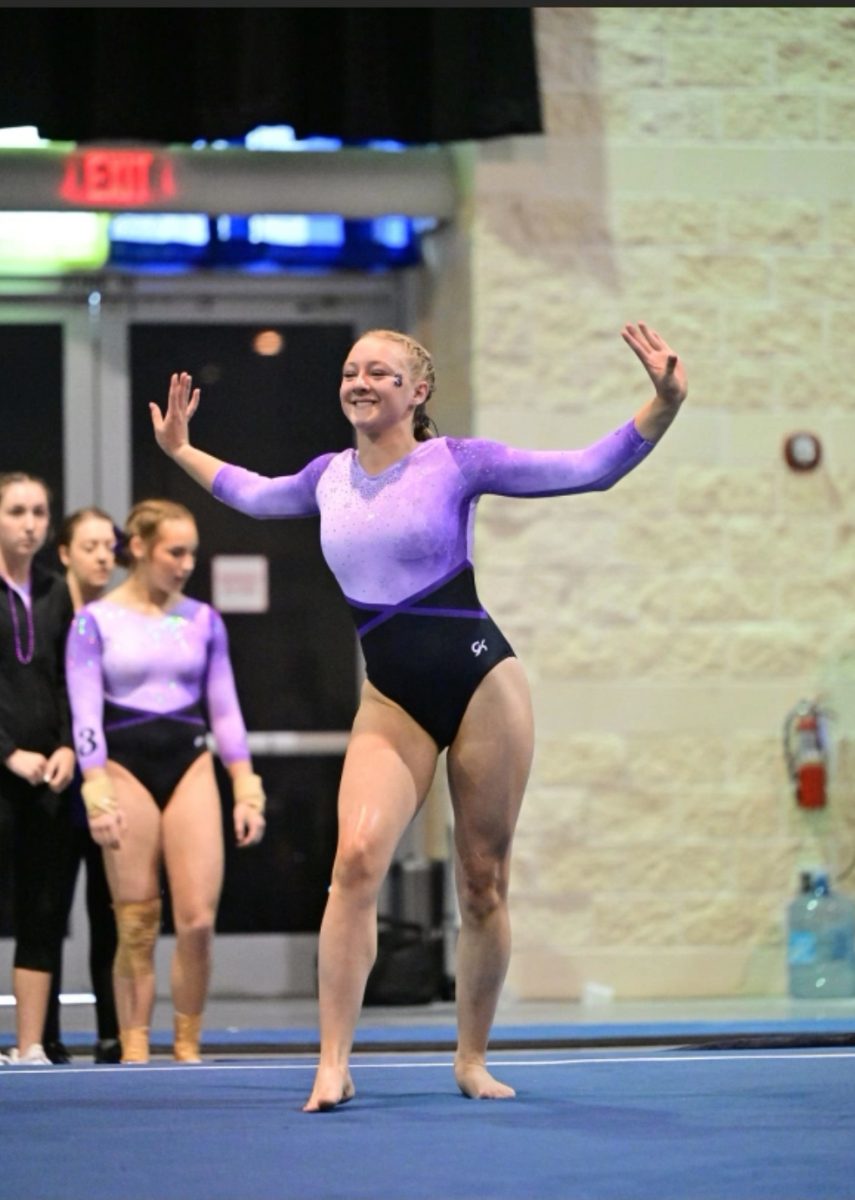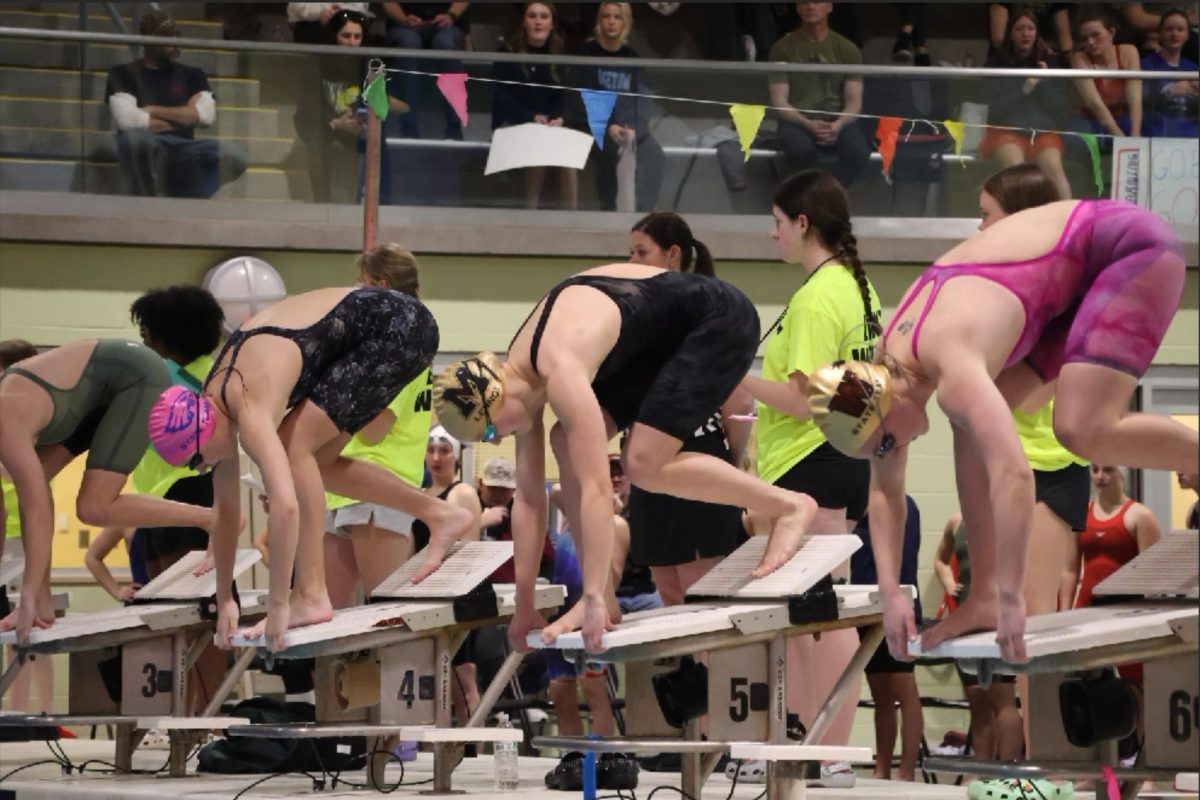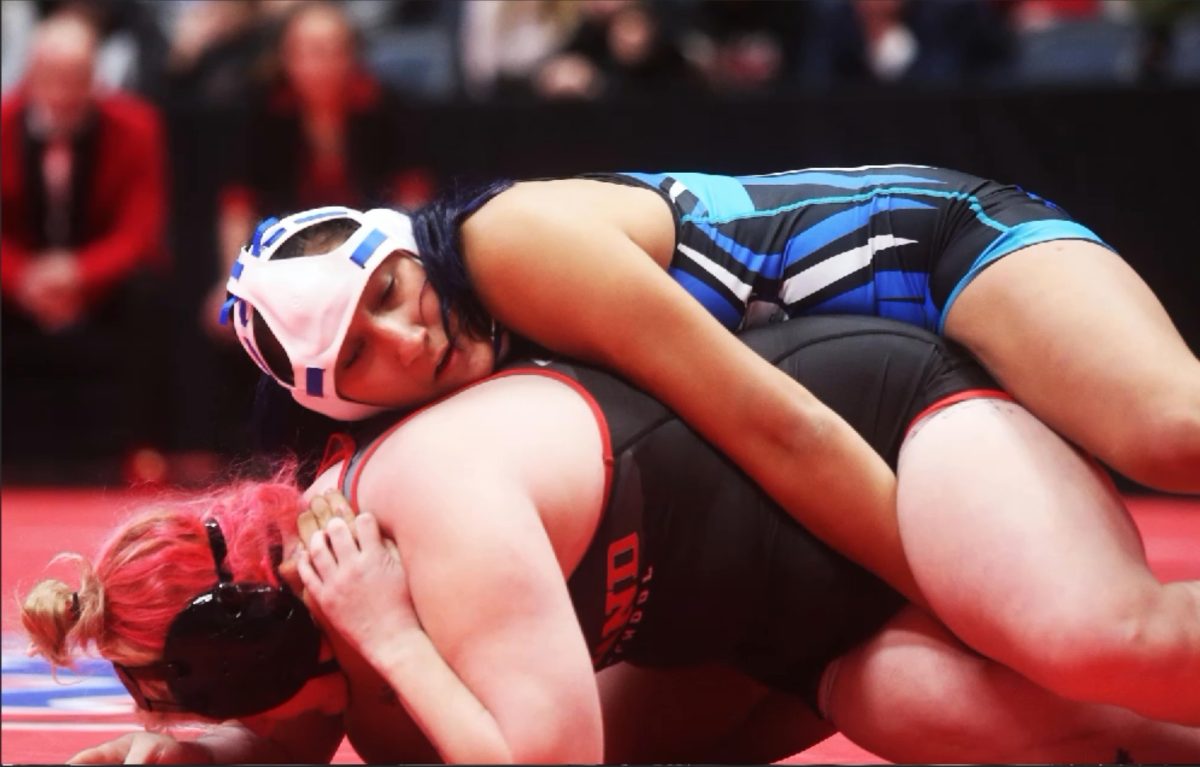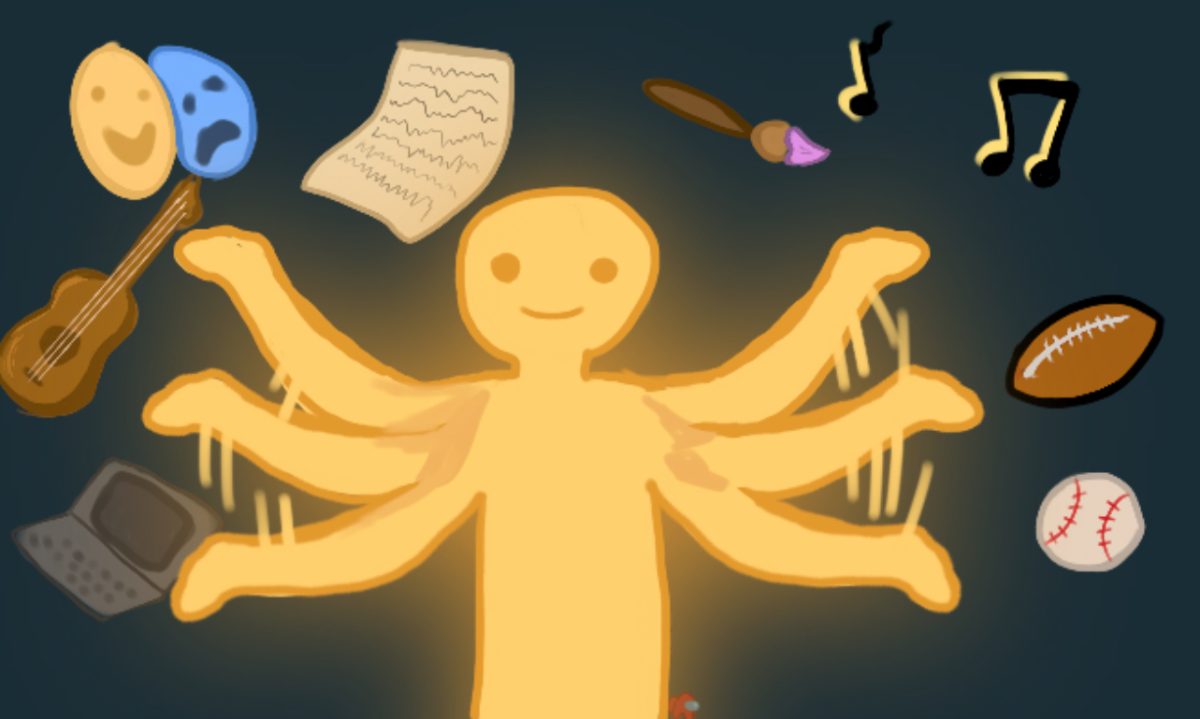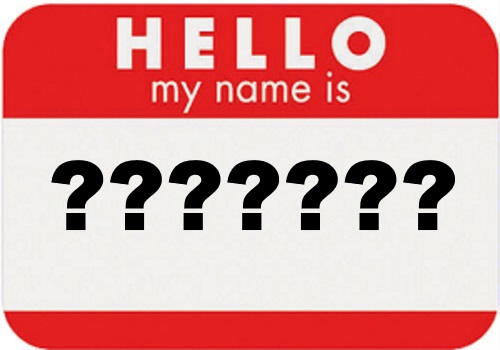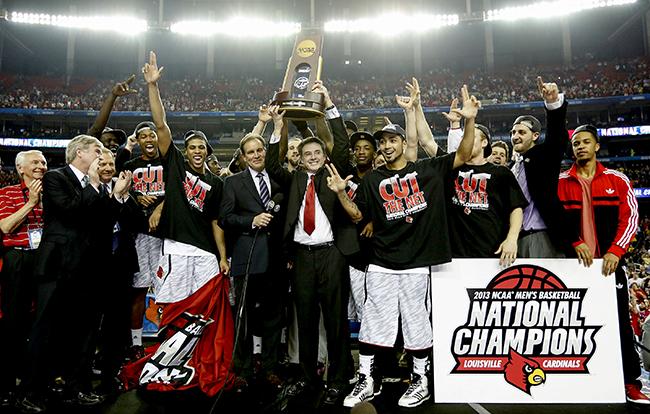Making Sense of the Madness
With conference tournaments starting and the annual ‘March Madness’ looming The Howler helps you understand the national craze.
Travis Heying/Wichita Eagle/MCT
Louisville Cardinals head coach Rick Pitino celebrates with his team after defeating Michigan, 82-76, and winning the NCAA Men’s Basketball Championship at the Georgia Dome in Atlanta, Georgia, Monday, April 8, 2013.
The deafening roar of the crowds, the last second buzzer-beating baskets, the rush of emotions after winning, and the devastation after losing. For avid basketball fans, these are all commonplace occurrences during the month of March. But for those of you who are unfamiliar with the world of college basketball, the phenomenon known as March Madness may be a foreign concept.
Just what about college basketball and the month of March is so enthralling, that people around the nation become personally and emotionally invested in filling out brackets and cheering their teams on to victory? Lets take a look.
First of all, what is March Madness? March Madness is the term that describes the National Collegiate Athletic Association (NCAA) Men’s and Women’s basketball tournament. The team to win this tournament becomes the national champion of collegiate basketball. The tournament runs from the second week of March to the first week of April. The term ‘madness’ was coined from the frenzy that sweeps the nation every year as 68 talented teams fight it out for basketball’s biggest prize. Originally the tournament was composed of 64 teams but two years ago the tournament was expanded to include 68 teams.
The 68 division 1 men’s basketball teams and the 68 division 1 women’s basketball teams are given an invitation to play in the tournament. Teams are chosen to be invited by a selection committee that is made up of university athletic directors and conference commissioners. 31 teams will receive an automatic invitation to the tournament for winning their respective conferences. The rest of the invites are left up to the selection committee. The selection committee uses an RPI, or rating percentage index, to help make the selections. The RPI looks at a team’s ranking in national polls, conference record, road record, wins versus ranked opponents, and the way a team finishes the regular season. There are certain teams that are basically guaranteed a spot and some that are cut right away, as well as a third group of ‘bubble’ teams that could go either way.
Once the selections are made the teams are split up into regions and seeds. Regions are made up of 16 to 18 teams and are determined by region, East, West, Midwest, and South. Within each region teams are seeded, the team with the best record is seeded first, and so on all the way to the team with the worst record that is seeded 16th. The games are single elimination so the pool is slowly narrowed down to one team. The winning teams of each region make up the ‘final four’.
In each pod the first seed always plays the 16th seed, the second seed always plays the 15th seed and so on. A team seeded 16th has never won the championship. Teams that are seeded low and unexpectedly find success are called “Cinderellas”. Such cinderellas have included Virginia Commonwealth University that made it to the final four as an 11 seed in 2011 and George Mason that made it to the final four as an 11 seed in 2006.
Many people enjoy filling out brackets, which are their predictions of who will win each game, predicting who they believe will be in the final four and what team will be the ultimate champion. Many people become very invested in filling out their brackets and have made such a science of it that it is now called “bracketology”.
If you are interested in filling out your own bracket, check out the link below with a blank bracket to fill out and plenty of more information about march madness: Click Here.
Important dates (Men’s games):
Selection Sunday: Sunday March 16th
South Regional: March 27, 29 FedExForum (Memphis, Tenn.)
West Regional: March 27, 29 Honda Center (Anaheim, Calif.)
East Regional: March 28, 30 Madison Square Garden (New York)
Midwest Regional: March 28, 30 Lucas Oil Stadium (Indianapolis)
National Semifinals (Final Four): April 5 AT&T Stadium (Arlington, Texas)
Championship Game: April 7 AT&T Stadium (Arlington, Texas)



